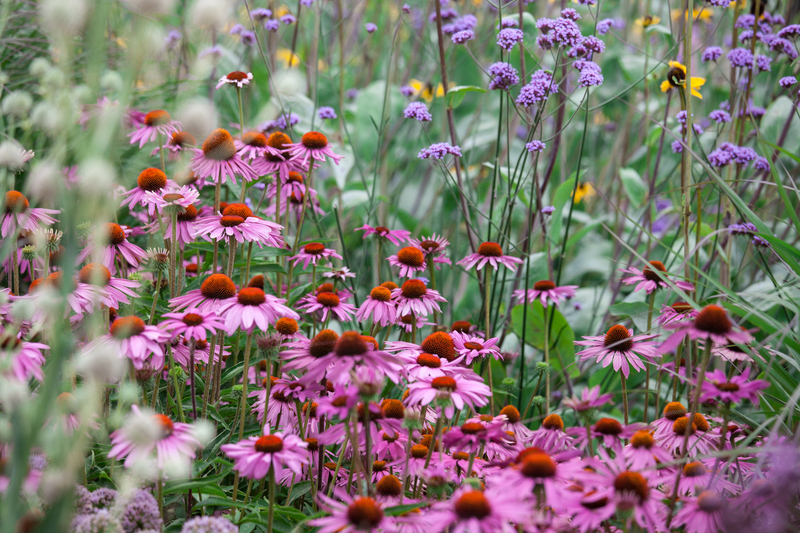Unlocking the Green: Expert Lawn Care Tips Every Beginner Needs to Know
Is your dream to own a lush, vibrant lawn that's the envy of your neighborhood? Whether you're starting with a patchy yard or you simply want to enhance the health and beauty of your grass, understanding the best lawn care tips for beginners is key. In this comprehensive guide, we'll unlock the secrets of expert lawn maintenance using proven strategies, step-by-step advice, and essential dos and don'ts. Welcome to your ultimate beginner's manual for nurturing a thriving, green oasis right outside your door!
Why Lawn Care Matters: The Benefits of a Healthy Yard
Lawn care is more than keeping up appearances - it's about supporting healthier living spaces, increasing property value, and protecting the environment. A well-maintained lawn:
- Reduces Soil Erosion: Dense grass helps hold soil in place, preventing loss from rain and wind.
- Improves Air Quality: Lawns act as natural air filters, absorbing pollutants and producing oxygen.
- Makes Outdoor Living Enjoyable: A healthy lawn provides a comfortable, inviting area for recreation and relaxation.
- Boosts Curb Appeal: First impressions matter! A vibrant yard increases your home's beauty and value.

Understanding Your Lawn: Grass Types and Local Conditions
The foundation of effective lawn care begins with knowing your grass type and understanding your area's climate. Different grasses thrive under various conditions. There are two main categories:
- Cool-Season Grasses: Such as Kentucky bluegrass, fescue, and ryegrass. They grow best in regions with cold winters and moderate summers.
- Warm-Season Grasses: Zoysia, Bermuda, bahia, and St. Augustine grow vigorously in southern climates with hot summers.
Tip: If you're unsure of your current grass, take a sample to a local garden center or reach out to your local extension office for identification.
Evaluating Soil Health: The First Step to Green Success
Soil quality is the unsung hero of a vibrant lawn. Test your soil to determine its:
- pH Level - most grasses thrive between 6.0 and 7.0;
- Nutrient Content - NPK (nitrogen, phosphorus, potassium);
- Texture - clay, sand, loam, and how that affects water retention.
Most hardware stores sell soil test kits or offer professional lab analysis. Test soil every few years for optimal lawn maintenance.
The Fundamentals of Lawn Maintenance for Beginners
1. Mowing Mastery: How and When to Mow for Healthier Grass
Mowing is more than a chore - it's a key part of lawn care. Follow these mowing tips for a denser, greener lawn:
- Follow the "One-Third Rule": Never remove more than a third of the grass blade in a single mowing. This protects roots and prevents shock.
- Adjust Mower Height: Keep grass a bit higher (2.5-4 inches) to shade the soil, retain moisture, and outcompete weeds.
- Keep Blades Sharp: Dull mower blades tear grass, leaving it susceptible to disease. Sharpen blades at least twice per season.
- Mow When Dry: Cutting wet grass can result in uneven mowing and clogged equipment.
Pro Tip: Change your mowing pattern regularly to avoid compacting the soil and creating unsightly "ruts."
2. The Secret to Deep Watering: When and How Often?
Overwatering and underwatering are two of the most common mistakes in lawn care. Here's how to meet your grass's hydration needs:
- Water Early in the Morning: This reduces evaporation and helps prevent fungus and disease.
- Deep, Infrequent Waterings: Aim for about 1 inch per week (including rainfall). Deep watering encourages roots to grow deeper, making your lawn more resilient to drought.
- Use a Rain Gauge: Place a simple rain gauge in your yard to monitor how much water your lawn is actually getting.
- Avoid Evening Watering: Wet grass at night is a breeding ground for mold and fungal diseases.
3. Fertilizing for Success: Feeding Your Grass the Right Way
Fertilization is a crucial part of any expert lawn care routine. Fertilizer provides essential nutrients, but timing and selection are everything:
- Choose the Right Fertilizer: Use a balanced, slow-release fertilizer suited to your grass type and soil test results.
- Follow the Schedule: Cool-season grasses are fertilized in fall and early spring; warm-season grasses thrive when fertilized during late spring or summer.
- Don't Overfertilize: Too much fertilizer can "burn" your lawn and wash into storm drains, polluting local waterways.
- Consider Organic Options: Compost, biochar, and other organic fertilizers improve soil health long-term.
Bonus Tip: Always follow the fertilizer's instructions to avoid damage and achieve the best results.
4. Controlling Weeds: Proactive Lawn Protection
Nothing ruins the appearance of a lush lawn like weeds. Employ these techniques:
- Maintain Thick Turf: A dense lawn crowds out weeds naturally.
- Use Pre-Emergent Herbicides: Apply these early spring to target weeds before they sprout (especially crabgrass).
- Hand-Pull or Spot Treat: For isolated weeds, remove by hand or use a targeted herbicide to avoid damaging your grass.
- Mow High: Leaving your grass blades taller shades soil, making it harder for weeds to germinate.
5. Aeration and Dethatching: Boosting Soil Health and Grass Growth
Aeration and dethatching are often overlooked but crucial for a healthy lawn:
- Aeration: This process creates small plugs in the soil, letting air, water, and nutrients reach the roots. Aerate once a year, especially in compacted areas or heavy clay soils.
- Dethatching: Thatch (a layer of organic debris) can suffocate roots. Remove thatch if it's thicker than 0.5 inches using a dethatching rake or machine.
Remember, aeration is best performed in the growing season of your specific grass type!
Seasonal Strategies: Lawn Care Throughout the Year
Spring Lawn Care Tips
- Clean Up: Rake up fallen leaves and debris for fresh growth.
- Fertilize & Overseed: Apply nutrients and overseed bare patches when soil is moist and temperatures are mild.
- Start Mowing Early: Mow when grass begins actively growing - don't let it get too tall!
- Apply Pre-Emergent: Prevent spring weeds before they germinate.
Summer Lawn Maintenance for Beginners
- Water Wisely: Water deeply, not daily. Early mornings are best.
- Mow High: Taller grass means better resilience to heat.
- Monitor for Pests: Watch for brown patches or insect activity, and treat as needed.
- Reduce Traffic: Avoid excessive lawn use during very hot, dry periods.
Fall Lawn Care Methods
- Aerate: Relieve soil compaction and improve root growth.
- Apply Fall Fertilizer: Boost root reserves for the winter.
- Continue Mowing: Keep mowing until grass stops growing.
- Overseed: Fill in sparse areas for a dense spring lawn.
Winter Preparation
- Clean Up: Remove debris and furniture from the lawn.
- Final Cut: Mow slightly shorter in your last mow before winter (but don't scalp!)
- No Heavy Traffic: Walking on frozen grass can cause lasting damage.
Expert Lawn Care Tips for Common Beginner Challenges
Dealing with Bald Spots
- Loosen Soil: Lightly rake and aerate bare areas to encourage seed contact.
- Overseed: Apply high-quality grass seed matched to your lawn type.
- Water Consistently: Keep the area moist until the seed germinates and the new grass is established.
Combating Lawn Diseases
- Identify Accurately: Look for patterns and consult a local nursery or extension service to diagnose.
- Adjust Watering: Reduce watering and only water in early morning to limit disease spread.
- Remove Affected Areas: Cut out infected grass if possible, then reseed.
Managing Pet Spots
- Dilute Immediately: Flush out pet urine with water to prevent brown spots.
- Tough Turf: Consider pet-resistant grass species if you own dogs.
- Repair as Needed: Overseed and fertilize spots for recovery.
Sustainable Lawn Care: Going Green the Smart Way
Eco-friendly lawn care is not only better for the environment, but often results in a stronger, more resilient lawn. Here's how to adapt:
- Mow Less Frequently: Reduces emissions and stress on your grass.
- Leave Clippings: Mulched clippings return valuable nutrients, reducing fertilizer needs.
- Compost: Use compost to naturally enrich your soil and build organic matter.
- Optimize Watering: Install a smart sprinkler system or use soaker hoses for precise irrigation.
- Native Grasses: Consider native or drought-tolerant grass varieties that require less water and care.
- Avoid Chemicals: Limit pesticide and herbicide use; spot treat only when necessary.
Sustainable practices reward you with a greener lawn, healthier ecosystem, and often lower maintenance costs in the long run.

Essential Tools Every Beginner Should Have
- Lawn Mower: Choose a model suited to your lawn size and type.
- String Trimmer or Edger: For clean lines and tidying up borders.
- Rake and Leaf Blower: Useful for cleanup, dethatching, and debris removal.
- Garden Hose and Sprinkler: For even, deep watering.
- Soil Test Kit: Monitor pH and nutrient levels.
- Fertilizer Spreader: Ensures consistent application for healthy growth.
- Aerator: Either manual or mechanical, for yearly aeration.
Unlocking a Greener Future: Your Path to Lawn Mastery
Becoming an expert in lawn care doesn't happen overnight, but with patience and these beginner-friendly tips, you can transform your yard into a beautiful extension of your home. Remember, consistency is key, and even small actions - like proper mowing, watering, and feeding - build up to impressive results.
- Analyze your lawn's unique needs each season.
- Adapt your lawn care approach as your skills and experience grow.
- Don't be afraid to seek advice - local garden centers, neighbors, or online forums can all provide valuable insights.
Start unlocking the green today! With these expert lawn care tips, you'll nurture a lush, healthy, and sustainable yard you'll be proud to show off.
Frequently Asked Questions About Lawn Care for Beginners
-
How often should I water my lawn?
Generally, aim for once or twice a week for a total of about one inch. Adjust based on season and local rainfall. -
When should I fertilize my grass?
Base fertilizer applications on your grass type, soil test, and local climate - typically spring and fall for cool-season, and late spring or summer for warm-season grasses. -
Is it worth aerating my lawn every year?
Yes, especially if you have clay soil or heavy foot traffic. Aeration helps your lawn breathe and absorb nutrients! -
What's the best way to control weeds?
Maintain a thick, healthy lawn, use pre-emergent herbicides in early spring, and spot-treat trouble areas as needed.
With this guide, you're ready to take the first (and best) steps towards a beautiful lawn! Happy growing!